You might be wondering how “spaghetti” and “squash” are not only in the same sentence, but are stuck together to describe the same fruit. There really is a fruit called Spaghetti Squash.
That wasn’t a typo. Most people believe that squash is a vegetable and therefore prepare dishes with it as a vegetable. However, botanically speaking, squash are considered fruits because they contain the seeds of the plant. This is also the case with the spaghetti squash.
The spaghetti squash can be prepared in a way that it can replace regular pasta noodles that are high in carbohydrates and low in nutrition. I won’t even mention that “normal” noodles are made with GMO (Genetically Modified Organism) grains. That’s why spaghetti noodles are a fantastic healthy alternative.
Did you just say “ick” and turn your nose up at the thought of squash taking the place of spaghetti noodles made of flour?
Keep an open mind! I’ll show you how delicious a spaghetti squash can be especially when smothered with homemade spaghetti sauce.
Yum!
14 Spaghetti Squash Facts
Before we cook, let’s learn a little bit about the spaghetti squash.
- Spaghetti squash have a very mild flavor.
- The spaghetti squash is not very sweet.
- A spaghetti squash are actually a fruit, but is often prepared as a vegetable.
- Spaghetti squash is an excellent source of Vitamin A which supports reproductive growth, cellular activities, vision, bone metabolism, immunity, and functions as a powerful antioxidant in the body.
- Spaghetti squash are about 92 percent water.
- Most winter squash varieties have almost twice the calories per serving compared to the spaghetti squash that has only 42 calories per cup.
- A spaghetti squash has less than 0.5 grams of fat per cup.
- One reason that spaghetti squash is great for regulating blood sugar and preventing type 2 diabetes is because it has five B-complex vitamins (B1, B3, B6, B5 also known as pantothenic acid, B9 also known as folate or vitamin M)
- The spaghetti squash is a very pale yellow, oblong vegetable measuring between 8 and 14 inches long and weighing 2 to 3 pounds.
- Spaghetti squash also have Omega-3 (prevents inflammation which can cause some cancers, heart disease, asthma, osteoarthritis and rheumatoid arthritis to name a few) and Omega-6 fatty acids (promote proper brain function).
- As strange as it sounds, almost 1/3 of the Recommended Dietary Allowance (RDA) of Vitamin C can be obtained by eating one cup of spaghetti squash.
- Since spaghetti sauce is high in potassium, it can lower high blood pressure.
- The spaghetti squash has 10 grams of the “good” cholesterol which includes 2.2 grams of fiber. The fiber in spaghetti squash can add several benefits to your health:
- The fiber added to your digestive track via spaghetti squash aids in removing cholesterol from your body.
- Fiber also aids in regulating blood sugar, so foods like spaghetti squash are good food choices for diabetics.
- If you are trying to keep your weight in check, the fiber found in spaghetti squash will help you feel more full for longer after you’ve eaten a meal without adding a lot of calories.
- Fiber will also help prevent constipation because it adds bulk to your stool.
- The seeds of the spaghetti squash can be eaten as a healthy snack alternative. Linoleic acid (Omega-6 fatty acid) and oleic acid (also in olive oil) are in the spaghetti squash seeds.
These qualities along with its great taste make the spaghetti squash an excellent choice for any meal, but especially as a grain free spaghetti alternative.
Oh, one more thing. Do you ever feel really sleepy after eating a big bowl of spaghetti or any other pasta? Well, you can eat a big bowl of spaghetti squash and never feel that bloated, over stuffed, tired and sleepy feeling you get with regular pasta. That’s such a huge plus!
Oven Baked Spaghetti Squash Recipe
Alright, enough talk about nutrition! Let’s cook!
Preheat the oven!
Cut one spaghetti squash in half long ways.
Place in a flat pan.
See all this stringy mess and seeds?
Well, scoop it out with a spoon, but don’t throw away the seeds. You’re going to be able to use them later in another recipe.
Also, be careful not to scoop out the flesh of the spaghetti squash.
Scoop until the spaghetti squash hole is hollow.
Flip the spaghetti squash empty hole, cut side down in the pan and add about 1/2 – 1 cup of water depending on the size of your pan.
I could use a smaller pan.
I don’t know why I keep grabbing the same one all the time.
Anyway, put it in the oven and bake.
When the spaghetti squash is finished, it will be tender when you stick a knife all the way through the skin into the flesh. If everything is soft, the spaghetti squash has cooked long enough.
Now the really fun part starts. With a fork, scrape the flesh of the spaghetti squash.
Scraping the flesh will separate the cooked spaghetti squash into spaghetti-like strands.
Continue scraping until you have scraped all the flesh off the outer skin.
You don’t eat the outer skin, but if you wanted to be creative, you could use the skin as the serving dish.
Obviously, I chose to use a plate.
Can you see how the strands could almost fake you out that they are spaghetti?
The taste of the spaghetti squash is rather bland, so it won’t overpower your dish with flavor. The spaghetti squash will have the flavor that you give it.
I topped the spaghetti squash with homemade spaghetti meat sauce.
Since as long as I can remember, spaghetti has been my favorite meal. Alyssa and I used to eat spaghetti at least once a week. Spaghetti just made us feel happy. So all I can say about spaghetti squash is, “Thank God for spaghetti squash!!!!”
You can top your spaghetti squash with whatever ingredients you want and I have a ton of recipes using spaghetti squash, but my first choice is spaghetti sauce.
Would you like a bite?
Oven Baked Spaghetti Squash Recipe
Ingredients:
1 spaghetti squash, cut in half (half is one large serving)
1/2-1 cup of water
Directions:
Preheat the oven to 400 degrees Fahrenheit.
Cut one spaghetti squash in half long ways. Place in a flat pan and using a spoon, scoop out the seeds and webs. Discard the seeds and webs or save for another recipe. Be careful not to scoop out the flesh of the spaghetti squash.
Scoop until the spaghetti squash hole is hollow.
Flip the spaghetti squash empty hole, cut side down in the pan and add about 1/2 – 1 cup of water depending on the size of your pan.
Put it in the oven and bake for 40-50 minutes or until tender at 400 degree Fahrenheit. . It is done when you can stick a knife all the way through the skin into the flesh and it is tender.
With a fork, scrape the flesh of the spaghetti squash. Scraping the flesh will separate the cooked spaghetti squash into spaghetti-like strands. Continue scraping until you have scraped all the flesh off the outer skin. Discard skin.
Plate the spaghetti squash and top with your favorite spaghetti sauce. Serve hot!

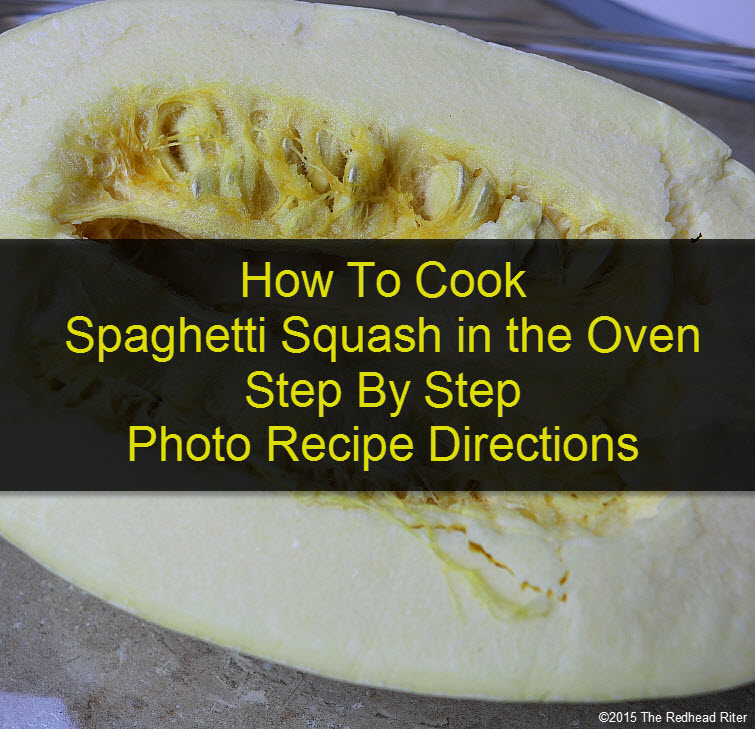

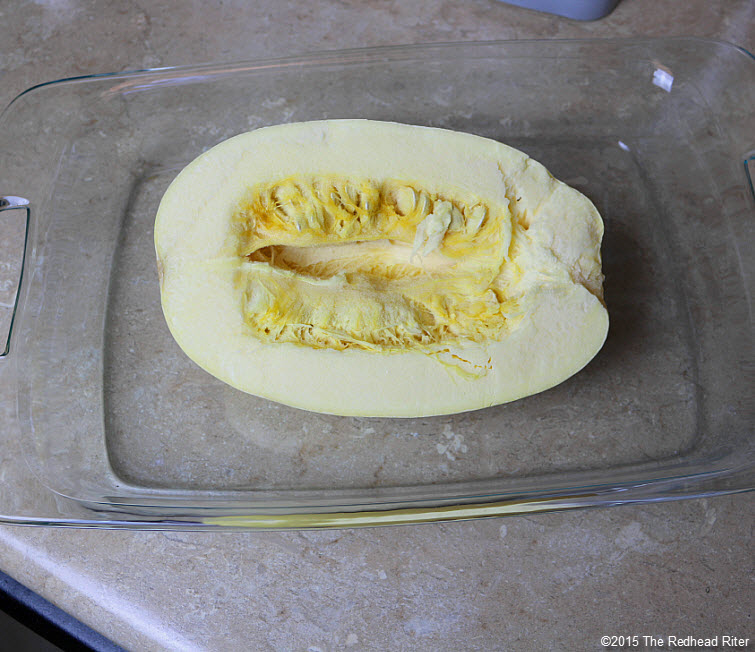
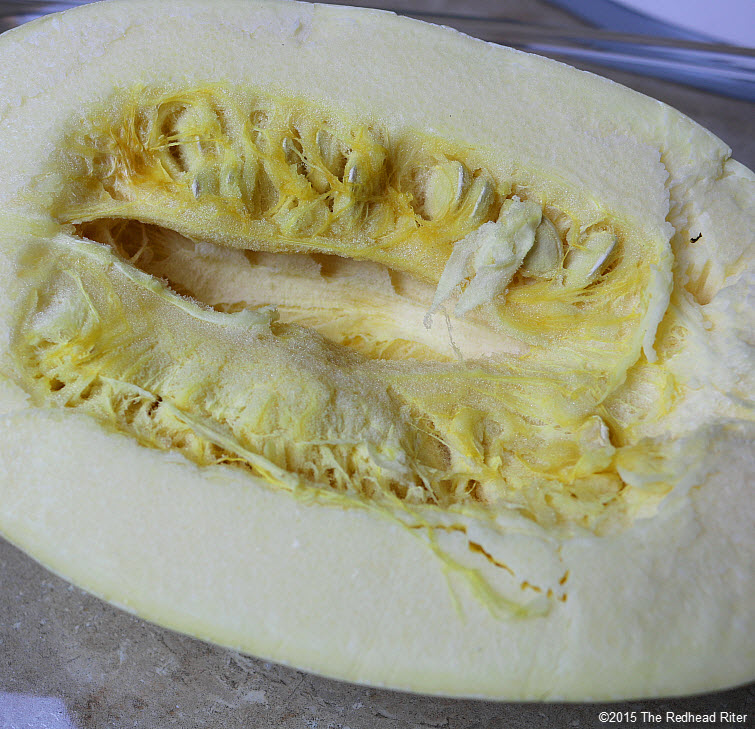


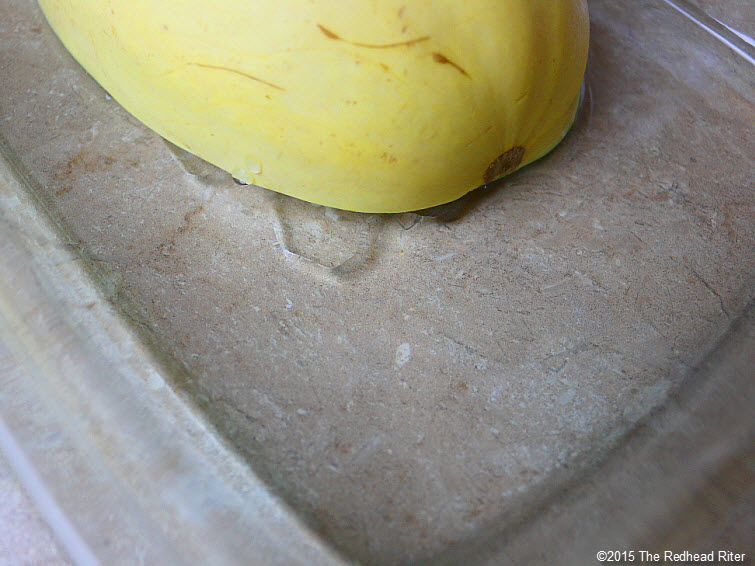

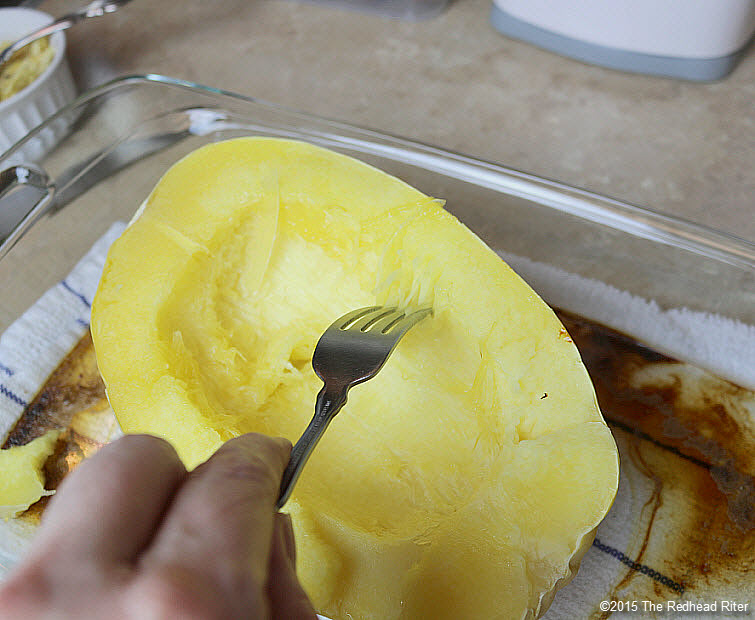
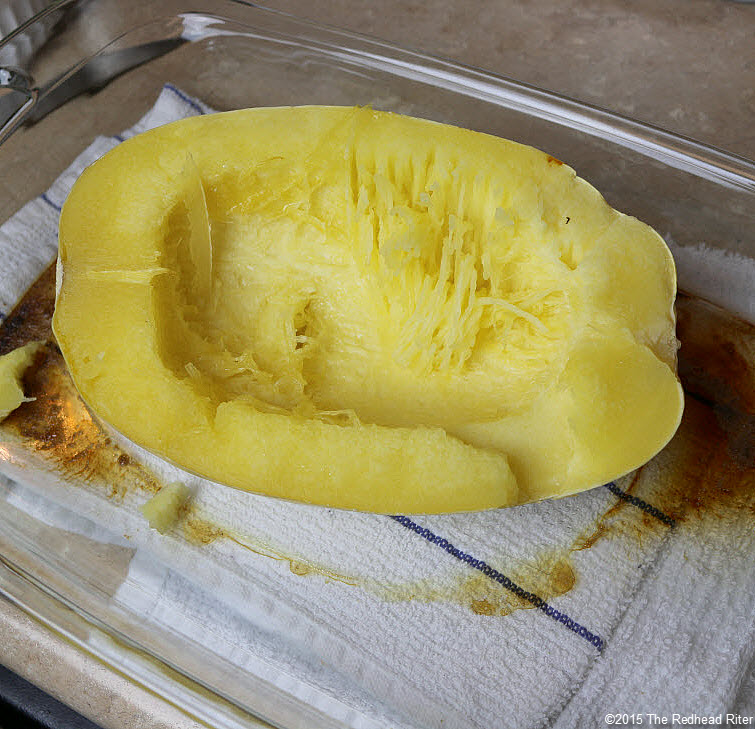
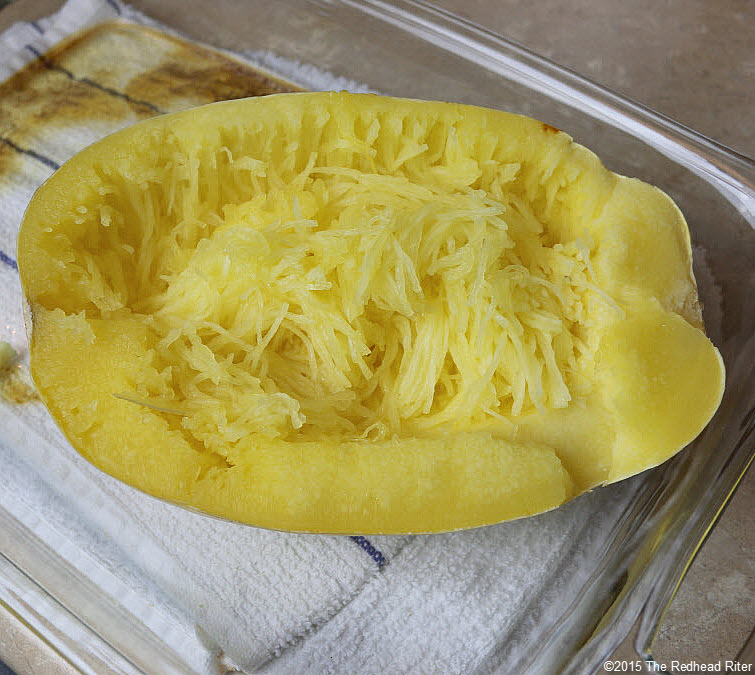
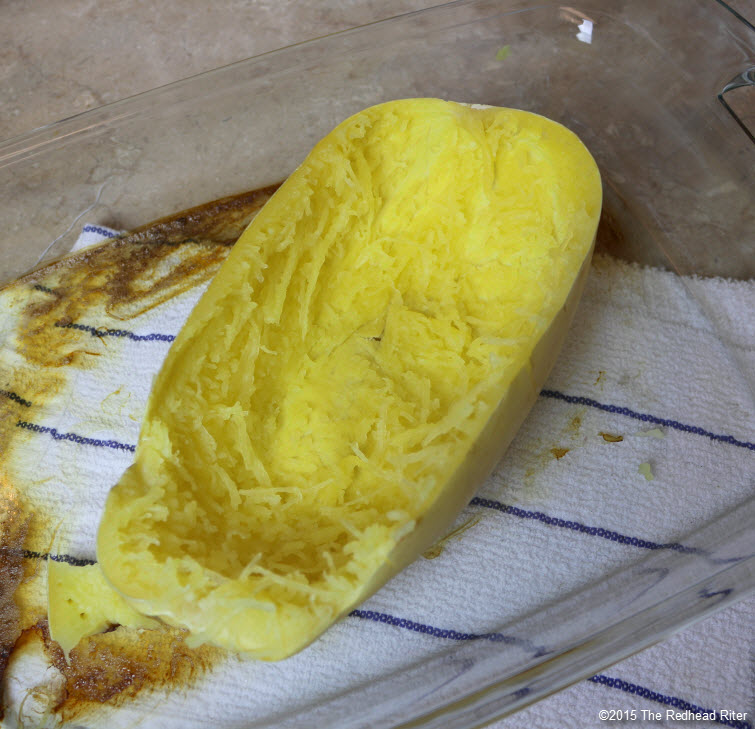
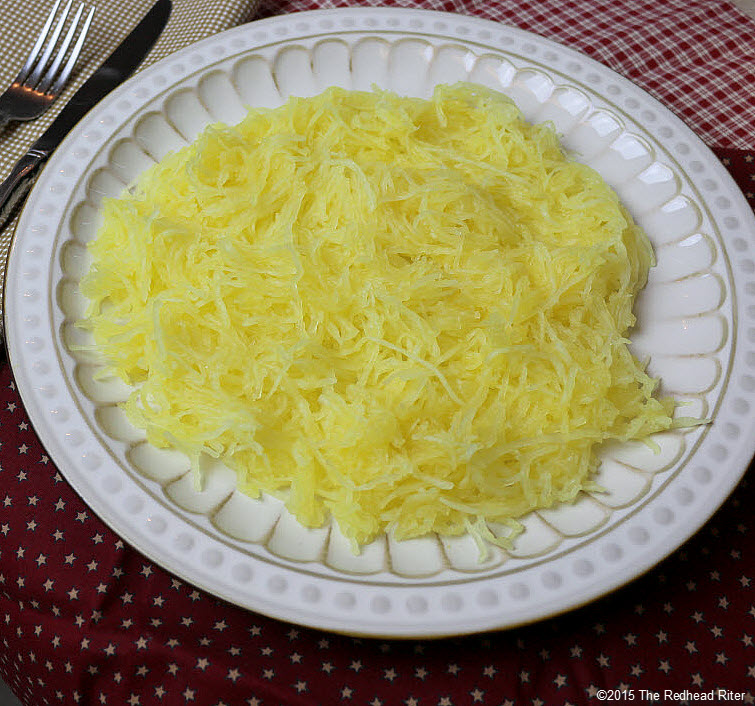
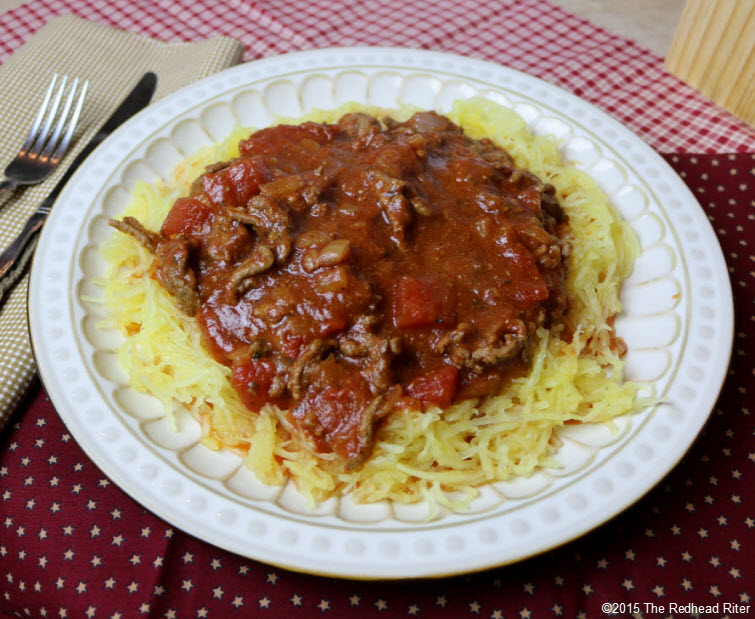
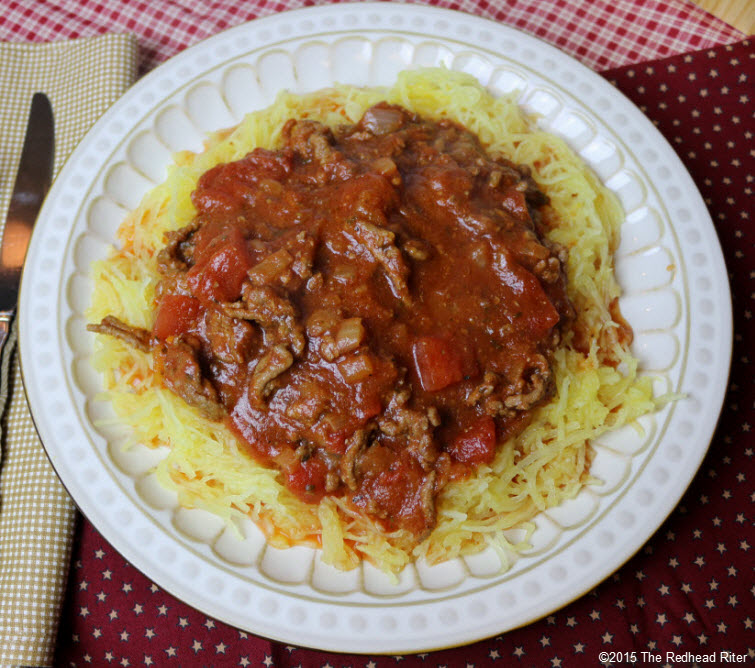
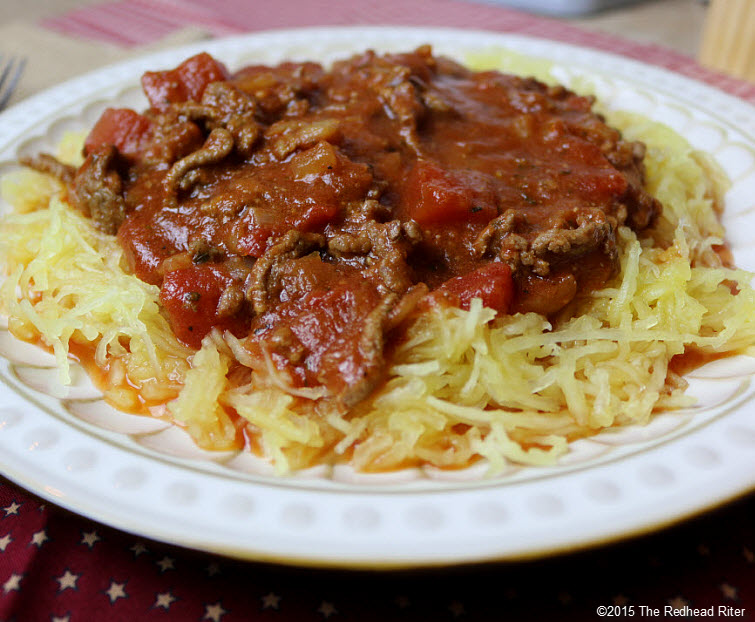
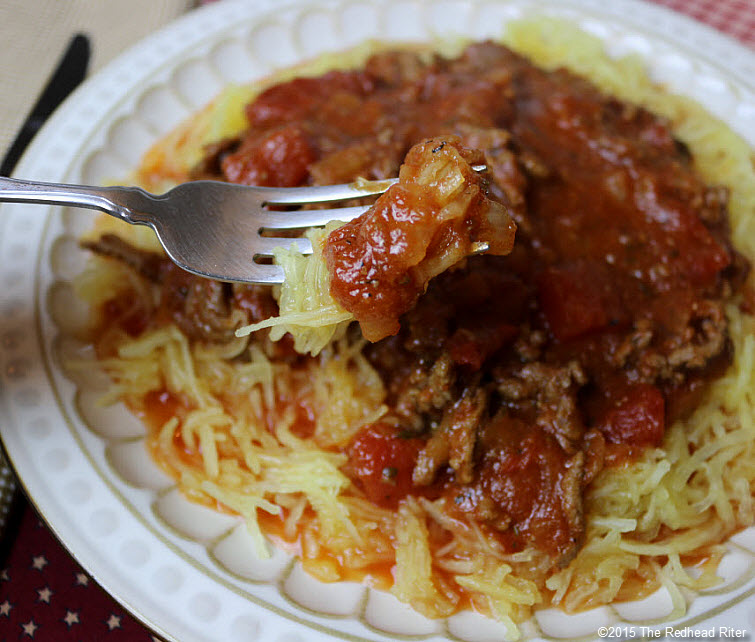

very cool – & obviously gluten- & grain-free! looks yummy!!! 😀
😀 Yes, yummmmmy!
This looks delicious! I love spaghetti squash and yes I would love a bite! Thanks for stopping by the Thursday Favorite Things Blog Hop!
You better hurry and come get that bite Debi! 😉
You just made me really hungry…love spaghetti squash! Thanks for sharing with the Thursday Blog Hop!
LOL At least it isn’t fattening! 😀